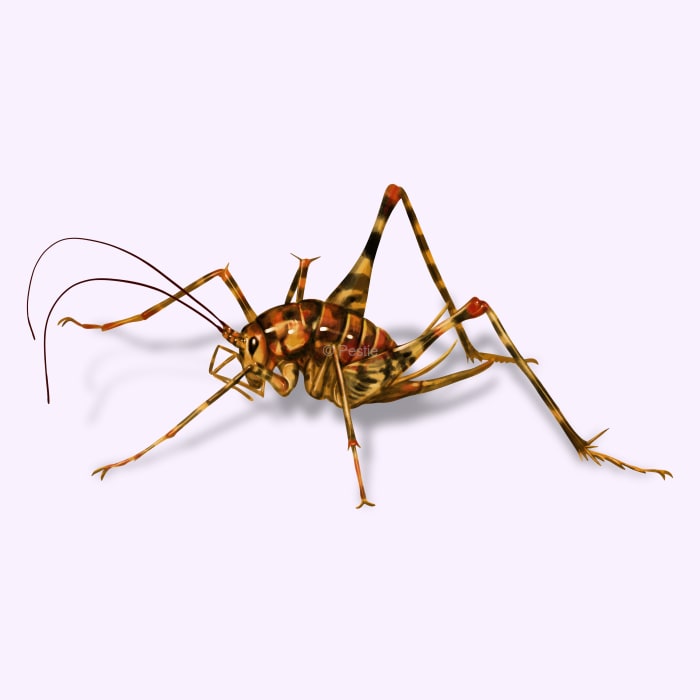How to identify and get rid of camel crickets

What do you get when you cross a spider, a camel, and a cricket?
What looks like a spider with long jumping legs, is none other than a camel crickets. These cricket relatives are known to wander into damp, moist areas of your home. Camel crickets are also known as cave crickets or spider crickets. When they aren’t snuggling up in your home, they are normally found in caves, or in cool, damp areas. Your basement, crawlspace, or garage is also a nice substitute place to live.
Camel crickets aren’t technically a cricket, like a field cricket, as they belong to a completely different family. They are more related to katydids.
They are nocturnal and hide in logs, stumps or holes during the day. If it becomes too hot, they may make their way inside your home to cool off. They typically eat fungi, decaying plants, or sometimes other insects.
How to identify camel crickets
Camel crickets are easy to identify if you know what to look for. These crickets have a distinctive humped back and long, spindly legs that make them excellent jumpers. They’re usually light brown with darker spots or bands, and unlike many other crickets, they don’t have wings, so they can’t chirp.
How big are camel crickets?
Camel crickets can grow up to 1 to 1.5 inches long.
How to get rid of camel crickets
Camel crickets will wander into your home to find a suitable place to call home. That means prevention is the best way to keep them from coming back inside. Here are a few tips you can do to make sure camel crickets keep their distance:
- Reduce moisture: Keep your home dry by using dehumidifiers, fixing leaks, and improving ventilation in damp areas like basements and crawl spaces.
- Seal any cracks or gaps: Seal cracks, gaps, and openings around doors, windows, and foundations to prevent crickets from entering your home.
- Remove clutter in your yard: Clear out piles of leaves, wood, and other debris around your home’s exterior, as these can provide shelter for camel crickets.
- Apply an insect barrier spray: You can use a perimeter spray to deter camel crickets from making their way inside. Check out Pestie’s pro-grade DIY solution that comes delivered to your door. In just a few minutes, you can set up an insect barrier that will keep your home pest-free.
Where do camel crickets live?
They are found throughout the United States, particularly in moist, shaded environments.
You’ll find them in basements, crawl spaces, garages, and under decks or porches—anywhere that’s cool, dark, and damp.
Treat camel crickets with Pestie
If you're still having trouble keeping camel crickets away, the best option is to use a pro-grade, effective pest control solution like Pestie.
Pestie is a do-it-yourself pest control solution that's specially designed to keep camel crickets and other pests away from your home.
With Pestie, you can rest easy knowing that your living space is protected and free of creepy crawlies. And the best part? It's designed for people, pets, and the planet, so you can say goodbye to harsh chemicals and hello to peace of mind!
- Save hundreds compared to traditional annual pest plans
- People, pet, and planet-friendly
- Pro-grade customized formulas
Quick facts
- Scientific name
Genus - Ceuthophilus
- Other common names
Spider Crickets, Cave Crickets, Hogan Bugs, Criders, Sprickets, Land Shrimps, Sand Treaders
- Colors
Light brown
- Life span
1+ years
- Diet
Decaying plants, fungus, small arthropods
How dangerous are Camel Crickets?
Low danger risk
No, camel crickets are harmless. They don’t bite, spread diseases, or sting.
There is a prehistoric bone carving of a camel cricket in the Cave of the Trois-Frères in France. The drawings in the cave are thought to date back to 13,000 B.C.








